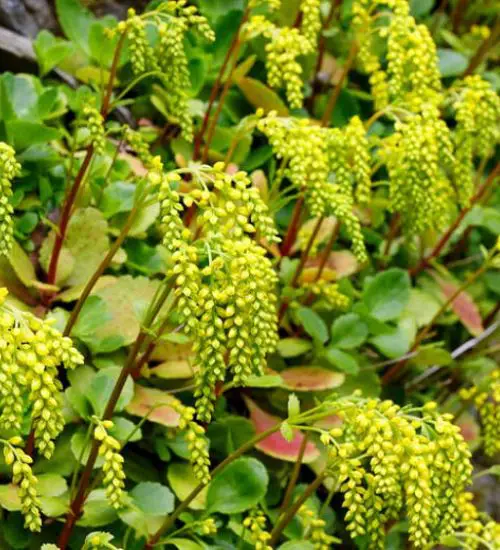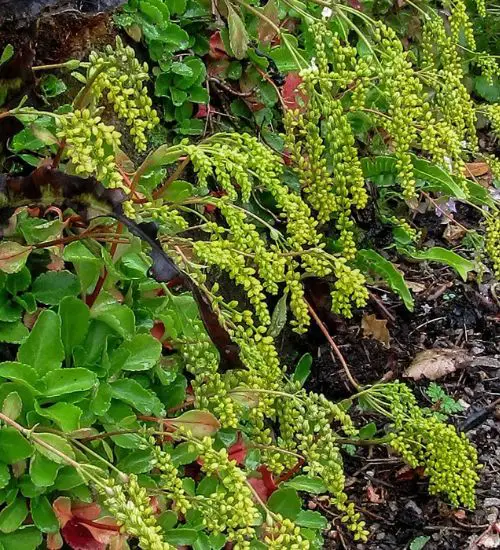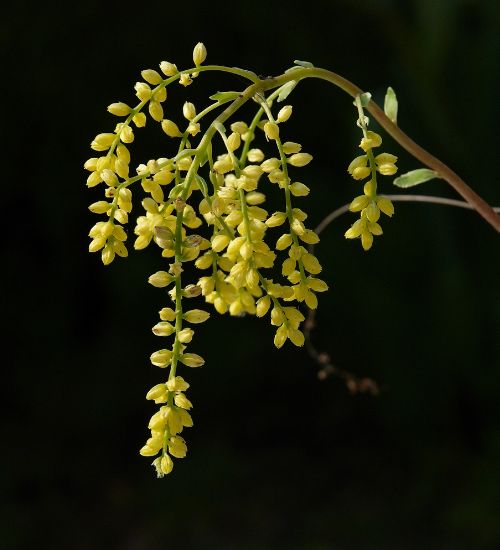Sun: Full sun to partial sun
Water: Typical water needs for a succulent
Temperature: Zone 6a from -10° F to -5° F (-23.3 ° C to -20.6° C) to Zone 9b from 25° F to 30° F (-3.9° C to -1.1° C)
Winter Survival: Cold hardy
Propagation: cuttings, seeds
Flower:
Flower Type: Yellow-Green
Toxic: Generally non-toxic to humans and animals
Dormant: summer
Space Requirement:
Common Problems: pests
Where to buy Umbilicus Oppositifolius?
Basc Care for Umbilicus Oppositifolius
Watering
Regular watering period should be every 2 weeks
One simple tip for you is that you can use some online apps to check the soil status before you go water your succulents. I would recommend the ThePlantsCheck app, it has some nice features there.
Fertilizing
Only feed this succulent during its active growing seasons which means winter. Use the right fertilizer applied in the right amounts. Applying half-strength balanced fertilizer every month or so is recommended for optimal results.
Do not fertilize during summer as the plant is dormant.
Sun & Location Requirements for "lamb's-tail"
Umbilicus Oppositifolius needs full sun to partial sun in order to thrive. Aim for 6 hours of direct sunlight each day, and adjust depending on the season and your climate. If you don't have an outdoor spot that receives sufficient light, consider placing your succulent near a south-facing window all year round.
Umbilicus Oppositifolius is known for its cold hardiness and ability to survive in frigid winter temperatures. This succulent's thick leaves and stems help it retain moisture, aiding it in surviving freezing temperatures. Additionally, the succulent's attractive foliage offers a festive touch to any garden in cold climates. With its ability to survive down to 0°F, "lamb's-tail" is an excellent choice for areas with frosty winters.
Propagation
One way to propagate Umbilicus Oppositifolius is by cutting
Growing Umbilicus Oppositifolius from seeds is an easy and economical way to produce more plants. Identify a healthy seed by its plumpness, dark color and slightly sticky texture. Once the potting mix has been pre-mixed with well-draining soil, sow the seeds evenly and press lightly into the surface. To ensure germination, keep the container in bright but indirect light and mist the soil gently with a spray bottle.
Toxicity

Umbilicus Oppositifolius is generally non-toxic to humans and animals. However, it is important to be aware that certain parts of the plant may contain toxins which can cause mild skin irritation. It is advised that you keep the plants away from small children or pets, as they may unknowingly ingest them and suffer ill effects.
Pests and Diseases
Umbilicus Oppositifolius can be affected common pests and diseases like most of the other succulents such as snails.
If you do spot any of pest signs, you can treat your succulent using below methods.
- Snails: clean infected plants, soapy water.
Besides that, to prevent serious health issues from happening, keep your succulent in a well-ventilated area and check it regularly for any signs of pests or health problems.


